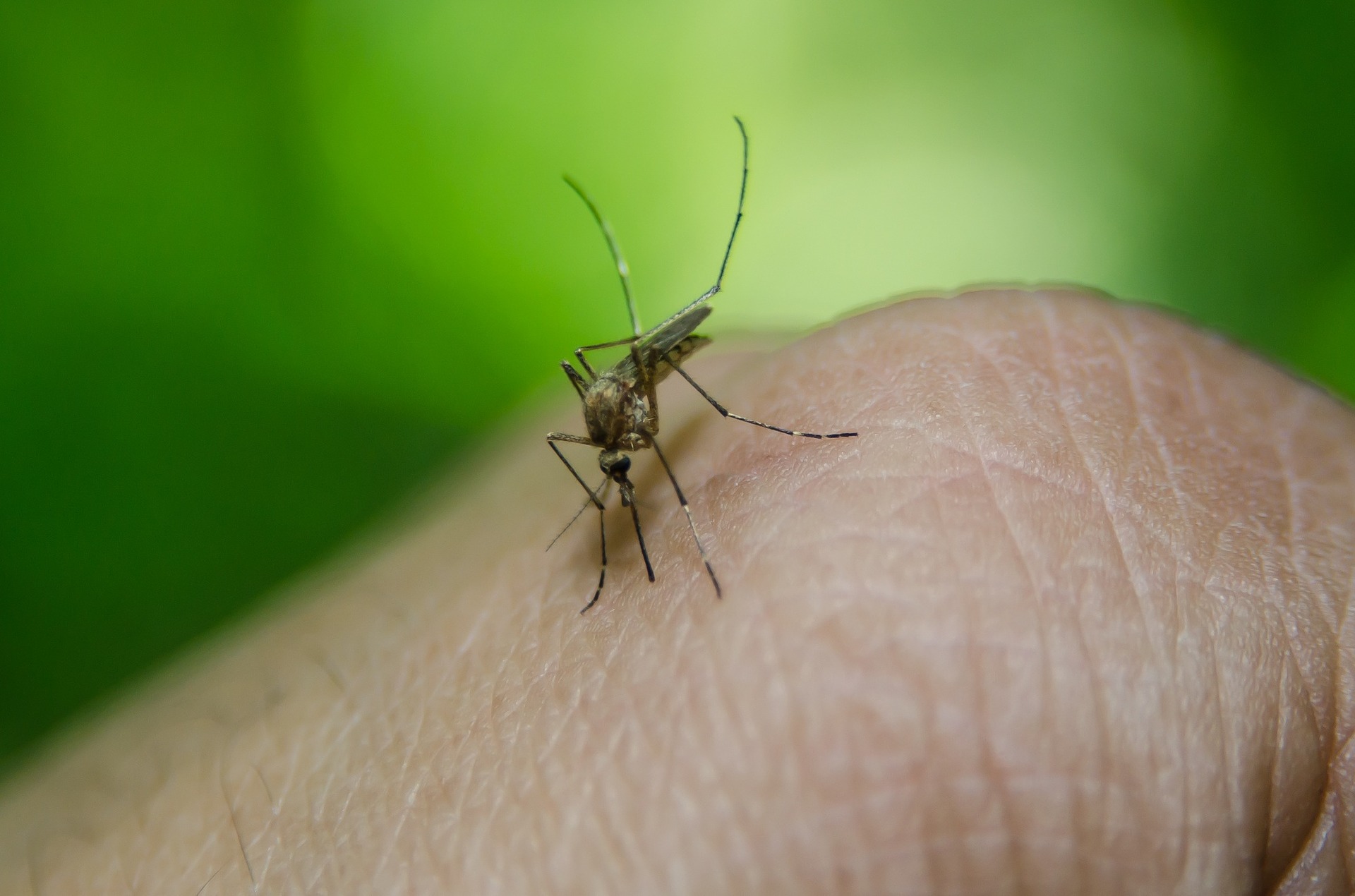 Evolution & Behaviour
Evolution & Behaviour
The taste for human sweat
Mosquitoes transmit diseases due to their attraction to humans. Here we discuss our paper where we show that mosquitoes lacking a particular receptor, do not sense lactic acid, a component of sweat and have their attraction to humans reduced by half.

When we sweat, our pores excrete a compound called lactic acid. Since the 1960s, scientists have known that lactic acid can elicit attraction in mosquitoes, but how they sense this compound has been elusive until now. Mosquitoes are hard-wired for seeking a vertebrate host to obtain a blood meal. This innate behavior, together with their ability to transmit diseases, has made mosquitoes the deadliest animal in the world.
Mosquitoes have detectors of chemicals emitted from our bodies that allow them to find us through their sense of smell (olfaction). Our lab's focus is to use genetics to identify the mosquito receptors that are responsible for detecting their human and plant hosts. In our recent paper, we have found a receptor pathway in the mosquito that senses human odors, including lactic acid. Mosquitoes have three main classes of receptors that they use to interpret information from their environment. The first class is composed of gustatory receptors (GRs). Female mosquitoes use them to detect carbon dioxide (CO2) from our breath. The second and third classes of receptors, olfactory (ORs) and ionotropic (IRs) receptors, are used to smell during flight to detect human hosts. Upon landing on a host, they likely use GRs and IRs to taste the skin and decide whether to feed.
In a previous study, we genetically removed the olfactory receptor co-receptor (orco). The behavior of modified mosquitoes told us that, without the OR chemosensory pathway, female mosquitoes were still attracted to humans' breath. Such a result meant that there were other genes responsible for host detection in mosquitoes. Therefore, we focused our efforts on finding chemosensory receptors that are localized to the antennae, the mosquito's nose. A gene called "IR8a" fit the profile, and we thus began to study it.
To assess whether the Ir8a gene was indeed a receptor for human sweat, we first used a genome editing tool to eliminate the gene's function. To determine the odors detected by Ir8a mutants, we initially recorded the electrical responses of the mutant antennae and compared them to normal mosquitoes. These recordings showed that Ir8a mutants were unable to respond to carboxylic acids and, more importantly, lactic acid, a significant component of human sweat.
We then wanted to understand if the loss of IR8a made it harder for mosquitoes to find humans. We can score mosquito attraction by placing a human subject's arm in a controlled environment. Here, mosquitoes can fly upwind to get close to the arm, but not bite them. Normal mosquitoes and orco mutants showed no difference in host attraction when CO2 was added to this assay. While Ir8a mutant attraction is reduced approximately by half when compared to normal mosquitoes. The reduction in Ir8a mutant attraction did not change if CO2 was present or not. This finding and other results from our paper suggests that the Ir8a pathway functions in guiding the mosquito to humans using a subset of odors that other receptors do not detect. These are most likely human odors that are acidic.
Our findings describe a critical new player in mosquito host detection, IR8a, advancing our understanding of the mosquito olfactory code. Mosquitoes are first attracted by CO2, which is exhaled from the breath of vertebrates and indicates a living animal. Activated mosquitoes then use ORs and IRs to discern the host's odor signature. We now want to find the odor-tuned receptors that detect lactic acid and other human acidic volatiles. This approach will increase our understanding of how the mosquito's deadly behavior works and provide molecular targets for mosquito repellent design.
Original Article:
Raji, J., Melo, N., Castillo, J., Gonzalez, S., Saldana, V., Stensmyr, M., & DeGennaro, M. (2019). Aedes aegypti Mosquitoes Detect Acidic Volatiles Found in Human Odor Using the IR8a Pathway. Current Biology, 29(8), 1253-1262.e7.Edited by:
Massimo Caine , Founder and Director
We thought you might like
AutonoMouse: A platform for automating mouse behavioral studies
Sep 30, 2019 in Neurobiology | 4 min read by Andrew ErskineMore from Evolution & Behaviour
Feisty fish and birds with attitude: Why does evolution not lead to identical individuals?
Aug 31, 2024 in Evolution & Behaviour | 3 min read by Lukas Eigentler , Klaus Reinhold , David KikuchiRudimentary form of syntax present in chimpanzees
Nov 29, 2023 in Evolution & Behaviour | 3 min read by Maël LerouxAn incredibly massive ancient whale skeleton reveals a new way to become a giant
Nov 27, 2023 in Evolution & Behaviour | 4 min read by Olivier LambertVikings and Migrants: Unravelling Scandinavia's Genetic Mosaic in the Viking Era
Nov 13, 2023 in Evolution & Behaviour | 3 min read by Anders Götherström , Ricardo Rodríguez VarelaEditor's picks
Trending now
Popular topics


